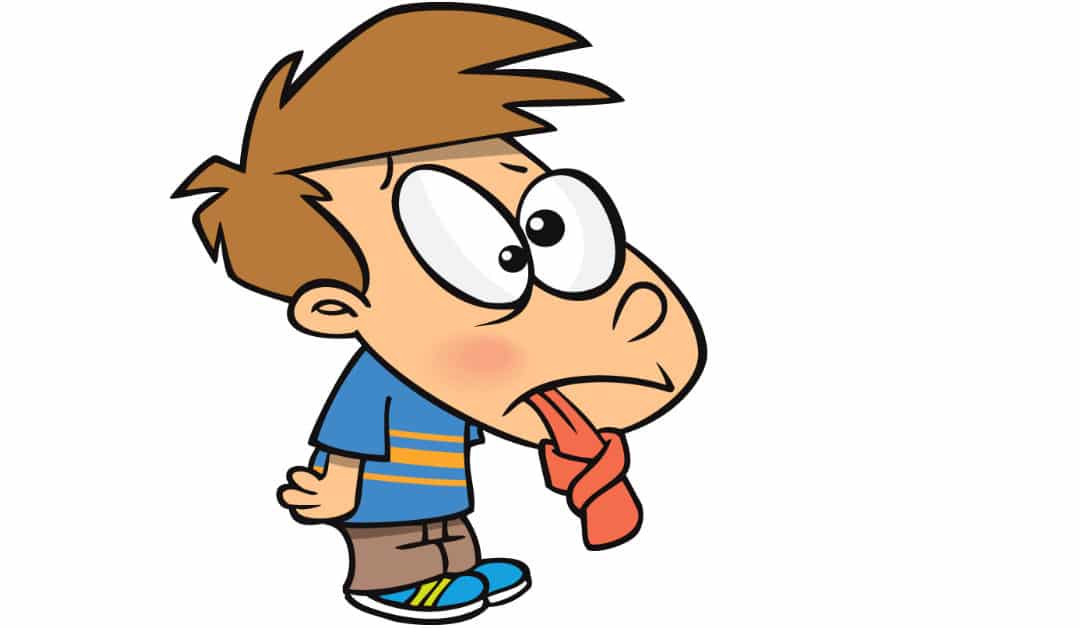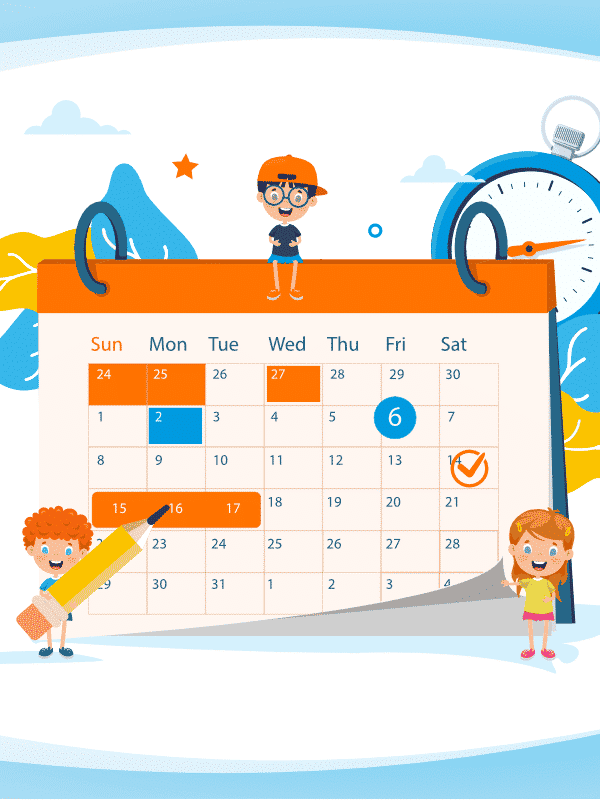Tongue twisters for kids are an indisputable source of giggles, laughs, blushes, and relaxation of the facial muscles. Children’s tongue twisters are one of the few types of wordplay that are fun to recite and a great tool to improve language development. Thus, tongue twisters for kids help you speak better and boost your repertoire of exciting and amusement-triggering words.
Moreover, few things compare to the adrenaline rush of attempting to recite a tricky tongue twister without tripping over words. Plus, not smiling after saying “She sells sea shells” or “Peter Piper picked a peck of pickled peppers” is definitely a pleasant challenge.
However, tongue twisters are not only meant for children, even lecturers and orators use them to achieve clarity and smoothness in their speech. Therefore, everybody can use tongue twisters to correct fluency disorders and improve their speaking skills (in their native or a foreign language).
Our TruFluency experts will describe how to approach this activity correctly and what are the best Spanish tongue twisters for kids you can teach your children. Trabalenguas, as they are called in Spanish, are also a great preparation routine for Spanish oral exams.
What is a Tongue Twister?
Tongue twisters are sets of sentences or short texts composed of reiterative syllables or sounds that complicate its quick and correct pronunciation. These phrases may rhyme, have alliterations, and paronymous words. Plus, it is possible that they don’t make sense at all.
Nevertheless, they don’t need to make sense, since their main objective is not to make sense or educate people on a topic, but to help you master a specific sound, and provide entertainment with wordplay.
What Aspects of Communication Can My Child Improve with Tongue Twisters for Kids?
Tongue twisters provide multiple opportunities for language enthusiasts to overcome their speech difficulties and progressively reach their language goals. Thus, tongue twisters help your communication skills in the following aspects:
Auditory Discrimination
As a parent, you can purposefully misarticulate words while saying the tongue twister. In this way, your child can listen and identify the incorrect sound productions. Later, they can enunciate them correctly.
Language Fundamentals
Have your child complete sentences, answer questions, and identify regular and irregular conjugations, adjectives, adverbs, synonyms, and antonyms. In general, produce orally different grammatical categories and understand their contextual functions.
Fluency
Your child will be able to practice a smooth rate and speech rhythm, which is key to practicing their power of persuasion.
Voice
For aspiring singers, interpreters, and media hosts, tongue twisters are tools to challenge proper breath support and maintain vocal hygiene.
What are the Benefits of Tongue Twisters for Kids?
Tongue twisters for kids strengthen the brain-muscle connections. In order to speak a language, our brain must connect each sound we make to a series of specific muscle movements. Eventually, these movements become unconscious, however, while learning to speak a language you must adapt to new mouth movements.
Tongue twisters for kids improve pronunciation because they force you to recite words correctly. Some of the words in a tongue twister sound exactly how they are spelled and some don’t.
Tongue twisters for kids provide sound clarity because they stretch and work the muscles we use when speaking. As a result, your children will improve their enunciation. This potentially will reduce frustration when they attempt to communicate their needs, thoughts, and feelings.
Playing with tongue twisters for kids provides a low-stress environment to talk about words and their meaning. Hence, you can introduce your children to the fascinating aspects of language.
Tongue twisters help kids read faster. These cheerful texts get more fun and exciting when children practice them at a quick pace. Repeating them continuously helps kids to read the words correctly and expand their vocabulary.
Tongue twister games are an exercise of patience. Initially, the speaker needs to read the text slowly, pay attention to the jawbreakers, say the text accurately, and repeat it. Patience can always benefit you in different aspects of life, including acquiring better diction.
Easy Spanish Tongue Twisters for Kids
Useful to learn the Spanish RR, one of the most difficult sounds for English natives.
Zorro, zorro modorro, pide socorro con un gorro.
Tan caro es ese carro que por caro no compro el carro.
Fun, traditional, and simple.
Cuando yo digo Diego, digo digo y cuando digo digo, digo Diego.
Great to teach kids during bath time.
Cada vez que me baño me hace daño, por eso me baño una vez al año.
Perfect to learn vowels in Spanish.
Lado, ledo, lido, lodo, ludo,
decirlo al revés lo dudo.
Ludo, lodo, lido, ledo, lado,
¡Qué trabajo me ha costado!
Intermediate Spanish Tongue Twisters for Kids
To practice B/V sounds:
Juan tuvo un tubo, y el tubo que tuvo se le rompió, y para recuperar el tubo que tuvo, tuvo que comprar un tubo, igual al tubo que tuvo.
Nadie silba como Silvia, porque si alguien silba como Silvia, es porque Silvia le enseñó a silbar.
Un ave pensaba mientras volaba, qué sentía el pez mientras nadaba. Y pensaba un pez mientras nadaba, qué sentía el ave mientras volaba.
To practice C/CH sounds:
La casa de Cacique muy cacicada es y si Cacique no limpia la casa de Cacique yo no la veré.
Yo compré poca carne, poca carne yo compré, como la carnicería carne tenía al carnicero poca carne le compré.
To practice the P sound:
Pepe Pecas pica papas con un pico, con un pico pica papas Pepe Pecas.
Compré pocas copas, pocas copas compré, como compré pocas copas, pocas copas pagué.
Pedro Pablo Pérez Pereira pobre pintor portugués, pinta pinturas por poca plata para pasar por París.
To practice the Q sound:
¿Cómo quieres que te quiera si quien quiero que me quiera no me quiere como quiero que me quiera?
Yo no quiero que tú me quieras porque yo te quiera a ti, queriéndome o sin quererme, yo te quiero porque sí.
To practice R/RR sounds:
Tres tristes tigres comen trigo en un trigal.
El perro de Rita me irrita dile a Rita que cambie el perro por una perrita.
Erre con erre cigarro, erre con erre barril, rápido corren los carros cargados de azúcar al ferrocarril.
To practice the S sound:
La sucesión sucesiva de sucesos sucede sucesivamente con la sucesión del tiempo.
Si Sansón no sazona su salsa con sal, le sale sosa; le sale sosa su salsa a Sansón, si la sazona sin sal.
La sucia Susana ensucia suficientemente el suéter de Sonia.
To practice the Z sound:
Tengo un durazno muy desduraznador, el que me lo desdurazne, será un gran desduraznador.
Un zapatero zambo, zapateaba zapateados de zapata, de zapata zapateaba zapateados un zapatero zambo.
Baza, come calabaza. Baza, calza zapatas y come calabazas.
Advanced Spanish Tongue Twisters for Kids
To practice C/CH sounds:
María Chucena techaba su choza y un techador que por allí pasaba le dijo: María Chucena, ¿techas tu choza o techas la ajena? Ni techo mi choza ni techo la ajena, que techo la choza de María Chucena.
To practice the G sound:
De generación en generación, las generaciones se degeneran con mayor degeneración.
To practice the Ñ sound:
El gato araña a la araña y
la araña araña al gato
pobre gato lo araña la araña
pobre araña que lo araña el gato.
To practice the Q sound:
Quique Queco Quicas quiere quintales de queso para quesadillas quebradizas, así que quintales de queso para quesadillas quebradizas quiere Quique Queco Quicas.
To practice the U sound:
Cuando cuentes cuentos
cuenta cuantos cuentos cuentas,
porque si no cuentas
cuantos cuentos cuentas
nunca sabrás cuántos cuentos sabes contar.
Have Fun with These Tongue Twisters!
Spanish tongue twisters for kids are an excellent option to noticeably improve pronunciation and diction while having fun with the family. Thus, parents can carry out home activities that include tongue twisters, so they can focus on teaching kids the sounds they find difficult to learn.
Our TruFluency Kids lessons are thought to create a friendly atmosphere that allows children to overcome their language difficulties within a custom plan of action. Pick a class time that fits your schedule with us now and help your children become bilingual.


